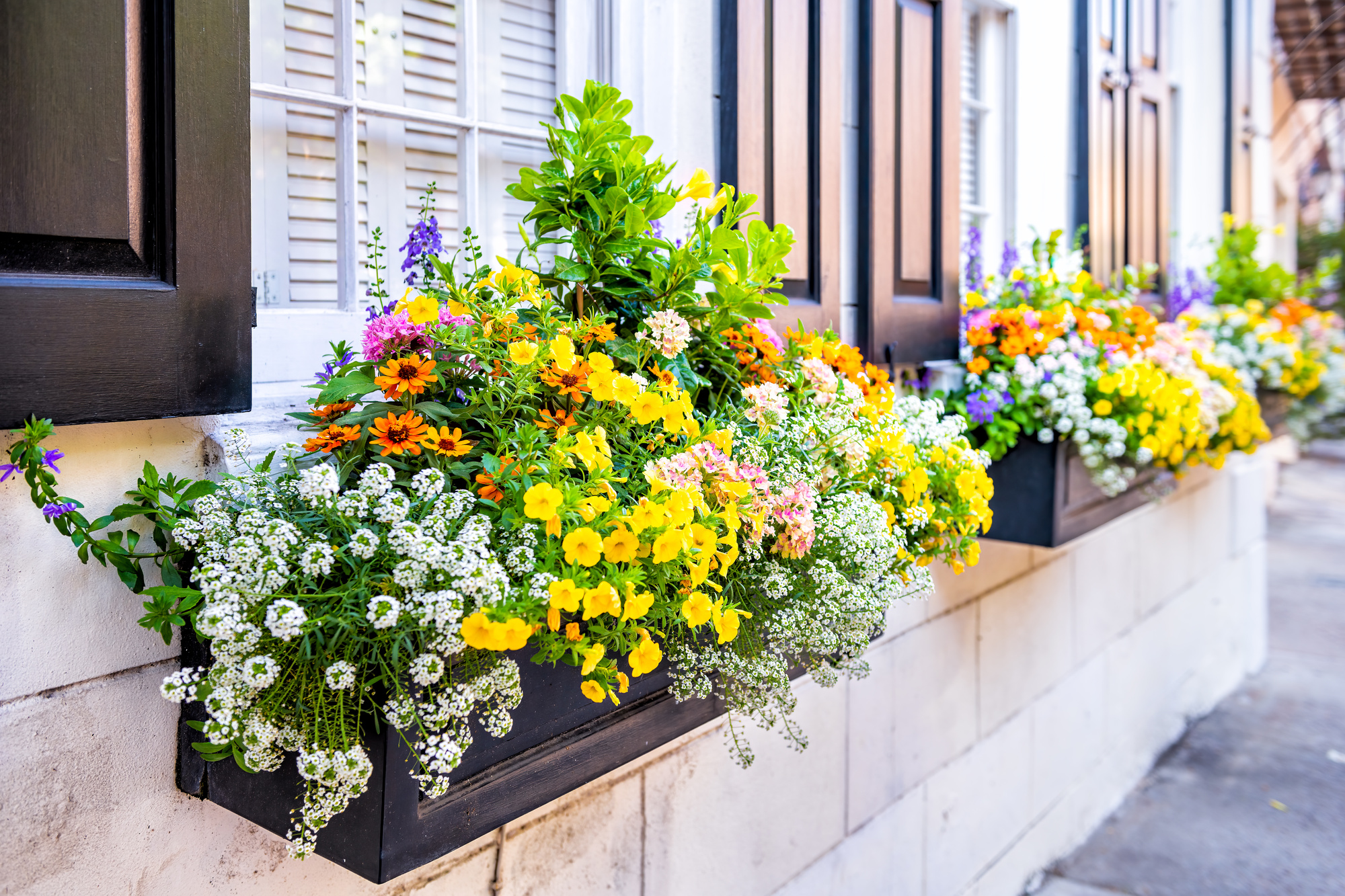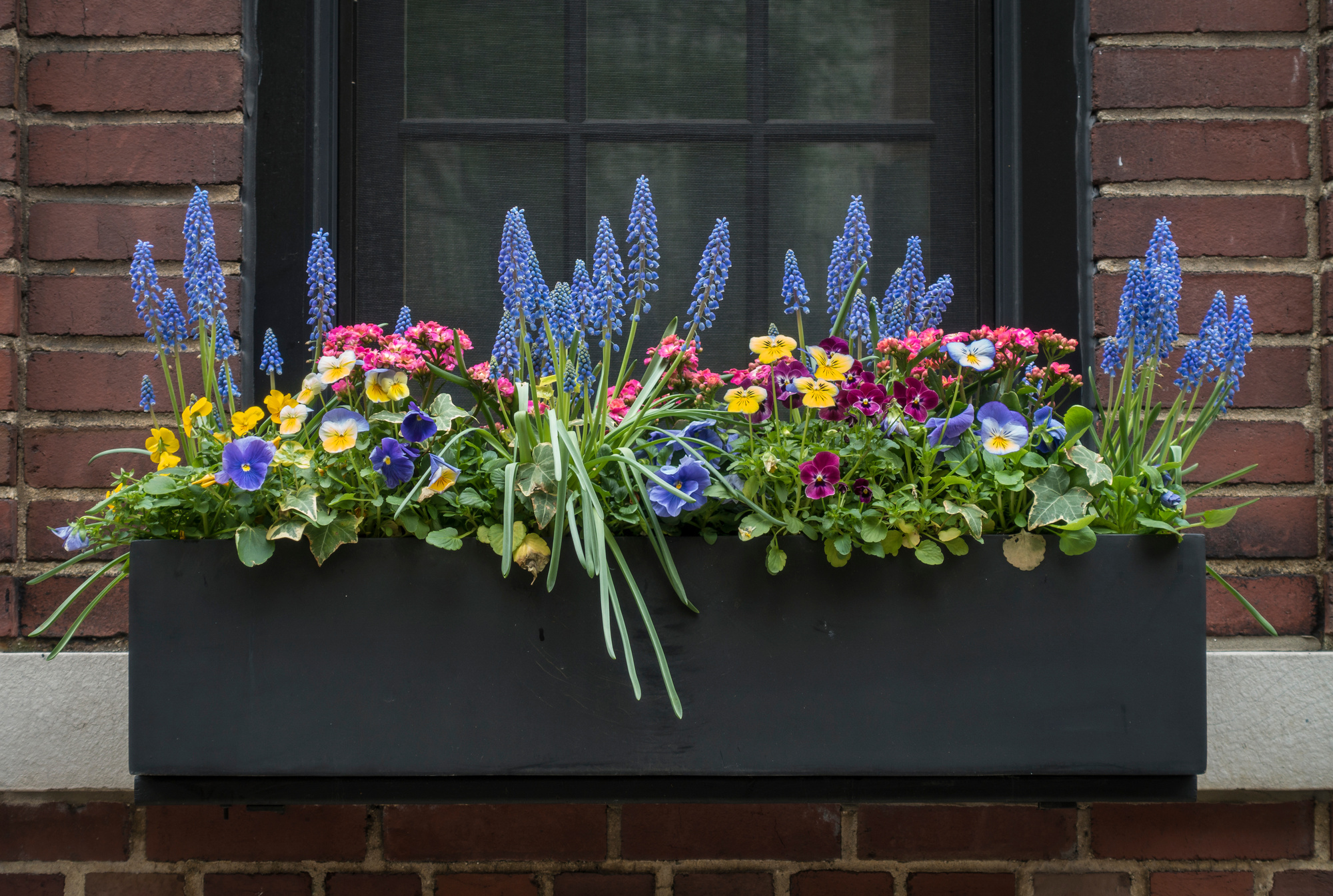Window boxes have become a popular way for homeowners who love to care for plants to add more garden or yard space. These versatile containers can be used to grow a variety of plants, including attractive foliage, vibrant flowers, and herbs. In addition to providing extra space for gardening, window boxes also add charm and curb appeal to a house.
Installing Your Window Boxes
A window box is affixed to an accessible window for a convenient way to care for plants. To install one, first measure the width of your window and choose a box that is slightly smaller. Select brackets that are slightly longer than the box itself.
When installing the brackets, make sure they’re level and securely attached to the wall. Position the top part of the window box a few inches beneath the window. Once the brackets are installed, place the window box on top and secure it in place.
Caring For Your Window Boxes
Although window boxes are generally easy to maintain, taking several simple steps can help prolong their lifespan and keep plants healthy.
- Perform Regular Upkeep
If you’re looking for low-maintenance window boxes, go for plastic or metal. Wooden window boxes require routine maintenance and treatment with a sealant to protect against moisture. It’s best to apply an oil-based, semi-transparent finish, depending on the type of wood.
To make upkeep more manageable, choose a rot-resistant and durable material that can support the weight of soil and plants. The boxes should have built-in drainage holes. Suitable choices for a wooden window box include treated cedar or redwood. Fiberglass is also an option but can be expensive. However, it can be a good investment due to its long lifespan.
Brackets should be slightly longer than the window box to prevent water from being trapped at the rear part of the box and causing damage to the siding. Position the top part of the window box a few inches beneath the window to allow adequate space for plant growth without obscuring the view.
Adding window boxes to your home is one of the tips to restoring curb appeal. With proper care and maintenance, your window boxes can provide a beautiful and welcoming addition to your home’s exterior.
- Apply Liners
Before planting in your window box, consider placing removable plastic liners or sheets. These can make it easier to change out plants, especially if you live in an area with changing seasons.
- Select Suitable Plants
Choose long-blooming plants for lasting appeal in your window box. Annuals are a good choice because they bloom for longer than perennials and can be easily replaced each year to rejuvenate the soil.
Consider planting herbs like cilantro and basil for use in the kitchen. If your window box receives a lot of sun, choose plants that can tolerate full sun exposure.
- Prepare Soil Appropriately

Wall exterior siding house architecture sidewalk and multicolored yellow flowers in planter as decorations in Charleston, South Carolina
The soil in window boxes can dry out quickly, so it’s important to add a soil amendment to help retain moisture. Many homeowners find that sphagnum peat moss works well, but coconut fiber is another good option.
- Offer Adequate Winter Protection
If you live in an area with harsh winters, it’s crucial to know that cold weather can dehydrate both your plants and the soil in your window boxes. To prevent this, make it a priority to water your window boxes regularly, especially before a hard freeze.
Check the moisture level of the soil every week. Although most plants need less water during the winter, you must water them more than once a week.
- Guarantee Sufficient Sunlight
Sunlight is a crucial factor in the careof window boxes. Make sure to position your boxes in an area exposed to a good amount of sun. If you notice that your plants aren’tgetting enough sunlight, move your window box to a sunnier location.
- Tend To Your Plants
Caring for plants in window boxes involves maintaining a regular watering schedule. Like most container plants, those in window boxes typically need to be watered at least once a day. To make this task more manageable, consider investing in an automatic watering system or positioning your boxes below open windows for easy access.
Fertilizing is another important consideration when caring for window boxes. During the initial planting phase, mix slow-release fertilizer pellets into the soil. Afterward, you can add liquid fertilizer every week.
Final Thoughts
Window boxes are a great option for those who want to enjoy gardening but have limited yard space. They provide an easily accessible location for growing a variety of plants, from herbs to decorative foliage. By taking proper care of your window boxes, you can enhance the aesthetic appeal of your home and engage in a fun and rewarding hobby at the same time.

